Table of Contents
- Origins of Minimalism in Architecture
- Form Follows Function
- Material Honesty
- Less is More
- Geometric Shapes
- The Influence of Minimalism
- Clean Lines and Simplicity
- Abundant Natural Light
- Emphasis on Functionality
- Use of Industrial Materials
- Sustainability and Eco-Friendly Design
- Minimalist Interior Design
- Iconic Examples of Minimalist Architecture
- Farnsworth House (Mies van der Rohe)
- The Glass House (Philip Johnson)
- The Barcelona Pavilion (Mies van der Rohe)
- The Timeless Allure of Minimalism
In the ever-evolving world of architecture, few movements have had as enduring an impact as Bauhaus and the broader design philosophy of minimalism. Emerging in the early 20th century, these movements have left an indelible mark on architectural aesthetics, shaping the way we perceive, create, and interact with buildings. This article delves into the origins, principles, and the far-reaching influence of minimalism in architecture, exploring how it extends beyond Bauhaus to redefine the built environment.
In the ever-evolving world of architecture, few movements have had as enduring an impact as Bauhaus and the broader design philosophy of minimalism. Emerging in the early 20th century, these movements have left an indelible mark on architectural aesthetics, shaping the way we perceive, create, and interact with buildings. This article delves into the origins, principles, and the far-reaching influence of minimalism in architecture, exploring how it extends beyond Bauhaus to redefine the built environment in profound ways.
Bauhaus: A Foundational Influence
Bauhaus, founded by Walter Gropius in 1919 in Germany, was a pioneering school of art, architecture, and design that sought to bridge the gap between art and craftsmanship. It emphasized functionality, simplicity, and the elimination of superfluous ornamentation. Bauhaus architects and designers believed that form should follow function, leading to the creation of iconic pieces of furniture and architectural designs that are celebrated to this day.
Minimalism as a Philosophical Shift
Minimalism, as it emerged from Bauhaus principles, transcends mere aesthetics; it’s a philosophical shift in the way we think about design and the built environment. At its core, minimalism emphasizes:
Simplicity: Stripping away non-essential elements to achieve clarity and elegance in design. This principle has led to buildings characterized by clean lines and uncluttered spaces, where every element serves a purpose.
Functionality: Prioritizing the functionality of a space or object over extraneous embellishments. Minimalist architecture focuses on creating spaces that serve their intended purpose efficiently, often with open layouts and flexible use of space.
Materiality: Celebrating the beauty of materials in their natural state. Minimalist architects use materials like concrete, steel, glass, and wood in their purest form, allowing their inherent textures and qualities to shine.
Beyond Bauhaus: The Global Impact of Minimalism
While Bauhaus was influential, minimalism’s impact extends far beyond its origins. Architects worldwide have embraced minimalist principles, shaping skylines and landscapes with their creations. The minimalism movement has given rise to iconic structures like the works of Ludwig Mies van der Rohe, the serene designs of Tadao Ando, and the innovative concepts of Zaha Hadid.
Minimalism’s Contemporary Relevance
Minimalism remains profoundly relevant in contemporary architecture. Its emphasis on sustainability aligns with modern eco-conscious values, encouraging the use of natural light, passive heating and cooling, and efficient use of resources. Minimalist design also extends to the digital realm, where clean, intuitive interfaces and user-centric experiences are highly sought after.
The Future of Minimalist Architecture
Minimalism in architecture is not a static concept; it continues to evolve. Architects experiment with new materials, digital technologies, and innovative construction techniques to push the boundaries of what’s possible while staying true to the essence of minimalism. This evolution ensures that minimalist architecture remains a dynamic force in shaping our built environment for generations to come.
In summary, Bauhaus and minimalism have ushered in a design revolution that transcends time and borders. These movements have fundamentally altered how we perceive and create spaces, emphasizing simplicity, functionality, and materiality. As minimalist architecture continues to evolve, it carries forward the legacy of these pioneering movements, influencing the design of homes, buildings, and cities, and reflecting the ethos of a more sustainable, elegant, and purpose-driven future.
To delve further into this matter, we encourage you to check out the additional resources provided here: The Bauhaus, 1919–1933 | Essay | The Metropolitan Museum of Art …
Origins of Minimalism in Architecture
Minimalism in architecture can trace its roots to several pivotal moments in design history, with the Bauhaus School of Design playing a central role. Founded in Germany in 1919 by architect Walter Gropius, Bauhaus sought to merge art, craftsmanship, and technology. Its core principles emphasized simplicity, functionality, and the elimination of unnecessary ornamentation.
Minimalism in architecture can trace its roots to several pivotal moments in design history, with the Bauhaus School of Design playing a central role. Founded in Germany in 1919 by architect Walter Gropius, Bauhaus sought to merge art, craftsmanship, and technology. Its core principles emphasized simplicity, functionality, and the elimination of unnecessary ornamentation.
The impact of the Bauhaus movement reverberated far beyond its time and place of origin. Its influence extended across continents and decades, shaping the very essence of modern architecture and design. One of the key tenets of Bauhaus was the idea that form should follow function. This revolutionary concept shifted the focus from extravagant decoration to the inherent utility and purpose of a structure or object.
The legacy of Bauhaus is most prominently embodied in the minimalist architecture that emerged in the mid-20th century and continues to thrive today. Architects like Ludwig Mies van der Rohe, who was a director at the Bauhaus school, championed the principles of minimalism in their work. Mies van der Rohe’s famous aphorism “Less is more” encapsulates the essence of minimalism—a commitment to paring down design elements to their essential core, creating spaces and structures that are visually clean, efficient, and uncluttered.
Minimalist architecture is celebrated for its ability to create serene and unobtrusive spaces. It embraces open floor plans, clean lines, and the use of natural light to establish a sense of harmony and tranquility. These design choices not only contribute to the aesthetic appeal but also promote functionality, as spaces are organized with a clear purpose in mind.
In contemporary architecture, minimalism continues to evolve. It adapts to the demands of sustainability, incorporating eco-friendly materials and energy-efficient designs. Minimalist architects also explore the interplay of technology and design, integrating smart home systems and innovative materials to create structures that are both forward-thinking and timeless.
Beyond aesthetics, minimalism in architecture embodies a philosophy that resonates with our quest for simplicity and purpose in a rapidly changing world. It encourages us to reassess our relationship with our surroundings, prioritizing what is essential and enduring. In doing so, it offers not only a visual language but also a way of life that values clarity, functionality, and the beauty of simplicity.
For a comprehensive look at this subject, we invite you to read more on this dedicated page: A Brief History of Minimalism: How the Minimalist Movement …

Form Follows Function
Bauhaus architects believed that the form of a building should be driven by its function. This principle remains a cornerstone of minimalist architecture, emphasizing practicality and efficiency in design.
Bauhaus architects believed that the form of a building should be driven by its function. This principle remains a cornerstone of minimalist architecture, emphasizing practicality and efficiency in design. Beyond its historical significance, this philosophy continues to influence contemporary architectural thinking in several profound ways:
Sustainability: The emphasis on function-driven design aligns seamlessly with the sustainability goals of modern architecture. Minimalist and functional design reduces waste, energy consumption, and the overall environmental impact of buildings. Architects today prioritize sustainable materials and energy-efficient technologies while adhering to the fundamental Bauhaus concept that design should serve a purpose and not be wasteful.
Versatility: Minimalist design fosters versatility and adaptability. Spaces designed with functionality in mind can easily evolve to meet changing needs. This is especially crucial in today’s dynamic world, where buildings often need to serve multiple purposes over time. The timeless appeal of minimalist architecture allows spaces to remain relevant and functional for generations.
Urban Planning: The Bauhaus philosophy extends to urban planning, where cities are seen as complex ecosystems with various functions. Contemporary urban planners draw inspiration from the Bauhaus approach to create cities that are efficient, sustainable, and conducive to a high quality of life. This includes mixed-use zoning, pedestrian-friendly design, and the integration of green spaces into urban environments.
Accessibility: The Bauhaus commitment to function naturally aligns with the principles of universal design and accessibility. Modern architects prioritize designing spaces that can be used by people of all abilities, ensuring that buildings are inclusive and accommodating to everyone, regardless of their physical or cognitive challenges.
Aesthetic Minimalism: The Bauhaus legacy lives on in the minimalist aesthetic that transcends architecture and extends to various design disciplines, including interior design, furniture, and graphic design. The clean lines, simplicity, and focus on function continue to inspire contemporary designers seeking to create elegant, uncluttered, and visually appealing spaces and products.
Digital Architecture: In the age of digital technology, the Bauhaus concept of form following function has found a new dimension in digital architecture. Architects and designers use computational tools to optimize form and performance, ensuring that buildings are not only functional but also responsive to environmental conditions and user needs.
Global Influence: The Bauhaus movement had a global impact, and its principles have been embraced by architects and designers around the world. Today, minimalist architecture transcends cultural boundaries and is a global language of design that resonates with people seeking simplicity, functionality, and timeless beauty in their surroundings.
In summary, the Bauhaus principle of form following function continues to shape contemporary architecture and design in profound ways. It not only champions efficiency and practicality but also aligns with sustainability, adaptability, inclusivity, and the evolving needs of our ever-changing world. This enduring philosophy reminds us that good design is not just aesthetically pleasing but, more importantly, serves a purpose and enhances the quality of life for all.
If you’d like to dive deeper into this subject, there’s more to discover on this page: What Is Bauhaus Style in Graphic Design – Zeka Design
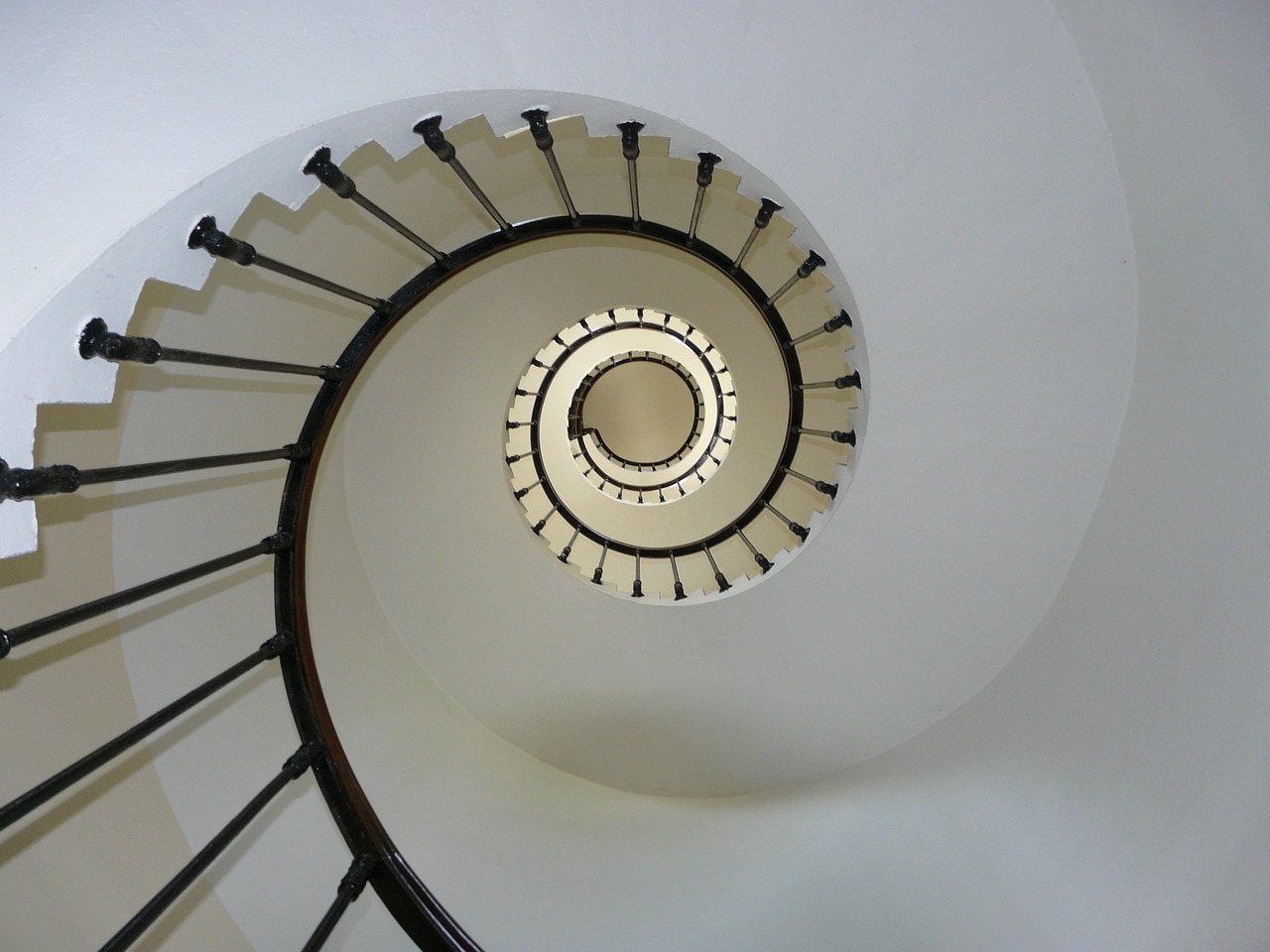
Material Honesty
Minimalism prioritizes the use of authentic and honest materials, celebrating their natural textures and qualities. This approach aligns with Bauhaus’s commitment to transparency in construction.
Minimalism, as an architectural and design philosophy, reverberates with the principles of authenticity and an unembellished celebration of raw materials. At its core, minimalism places a premium on the beauty found in simplicity, a concept that harmoniously aligns with the principles of the Bauhaus movement, which were rooted in transparency, functionality, and honesty in design and construction. Let’s explore how these two philosophies converge to create an enduring ethos of aesthetic integrity and purposeful design:
1. Authentic Materiality: Both minimalism and the Bauhaus movement share a deep respect for authentic materials. Minimalist architecture often features materials in their natural state, such as exposed concrete, raw wood, or unadorned steel. This choice underscores the material’s intrinsic beauty, texture, and unique qualities, echoing the Bauhaus philosophy of celebrating materials for what they are, without disguises or excess ornamentation.
2. Embracing Simplicity: Simplicity is a hallmark of both movements. Minimalist design principles call for a reduction of elements to their essential forms, emphasizing clean lines, uncluttered spaces, and an absence of unnecessary decoration. This approach echoes the Bauhaus commitment to simplicity, where function determined form, and design aimed at eliminating superfluous elements to achieve visual and functional clarity.
3. Transparency and Honesty: The Bauhaus movement advocated for transparency in construction, where the structure and materials of a building were not concealed but instead celebrated as part of the design. Minimalism carries forward this legacy by favoring open floor plans, large windows, and the exposure of structural elements. The resulting transparency in both movements fosters a sense of honesty, revealing how a building is constructed and how it interacts with its surroundings.
4. Functionality: The Bauhaus school placed a strong emphasis on functionality in design, with the belief that form should follow function. Minimalism shares this commitment to functionalism, where each design element serves a purpose. This common thread ensures that minimalist spaces are not only aesthetically pleasing but also highly efficient and practical, in keeping with the Bauhaus ethos.
5. Timelessness: Minimalism and the Bauhaus movement both pursue a sense of timelessness in design. By prioritizing the essential and eschewing ephemeral trends, they create spaces and objects that remain relevant and enduring. This longevity underscores the enduring appeal of their design philosophies, as they continue to resonate with contemporary sensibilities.
6. International Influence: Both minimalism and the Bauhaus movement have had a profound international influence on design and architecture. They transcended geographical boundaries and left a lasting mark on the global design landscape, demonstrating the universality of their principles and the enduring appeal of their aesthetics.
In conclusion, minimalism and the Bauhaus movement converge in their shared reverence for authenticity, simplicity, transparency, functionality, and timelessness. These design philosophies resonate across generations, fostering an enduring legacy that continues to inspire architects, designers, and artists to create spaces and objects that are not only visually striking but also deeply meaningful and purposeful. The alignment of these two philosophies reinforces the enduring power of design that celebrates the innate beauty of materials and the elegance of simplicity.
If you’d like to dive deeper into this subject, there’s more to discover on this page: The Bauhaus, 1919–1933 | Essay | The Metropolitan Museum of Art …

Less is More
A famous Bauhaus maxim, “less is more,” encapsulates the essence of minimalism. It emphasizes the removal of superfluous elements, creating spaces and structures that are clean, uncluttered, and focused.
The famous Bauhaus maxim, “less is more,” serves as a guiding light for architects and designers seeking to distill the essence of beauty and functionality in their creations. This concept extends far beyond mere aesthetics; it embodies a philosophy that has reverberated through the world of architecture and design for decades.
Balancing Aesthetics and Utility:
At its core, “less is more” underscores the delicate equilibrium between aesthetics and utility. Minimalism in architecture isn’t about stark barrenness; rather, it’s the art of refining spaces to their essential components. Each element, whether it’s a structural beam or a piece of furniture, is carefully considered for its contribution to the overall design. This approach ensures that every aspect of a building or space serves a practical purpose, while simultaneously contributing to its visual harmony.
Elevating the Experience:
Minimalist architecture seeks to elevate the human experience within a space. By removing distractions and extraneous ornamentation, it allows occupants to engage with their surroundings in a profound way. The uncluttered nature of minimalist spaces fosters tranquility, encouraging contemplation and reflection. Whether it’s a residential interior or a public building, the occupants are granted a heightened sense of presence, allowing them to connect more deeply with the environment.
The Power of Negative Space:
“Less is more” also celebrates the power of negative space. In minimalist architecture, empty or negative spaces are just as vital as the elements themselves. They create breathing room for the eye and the mind, emphasizing the beauty of simplicity. These spaces allow for the interplay of light and shadow, adding depth and dimension to the design. The result is a sense of spaciousness and serenity that can be profoundly moving.
Sustainability and Resource Efficiency:
The principle of “less is more” aligns seamlessly with sustainability efforts in modern architecture. By eliminating excess and prioritizing functionality, minimalist architects often use fewer materials, reduce waste, and lower energy consumption. The focus on durability and longevity ensures that minimalist structures have a reduced environmental impact, supporting a more sustainable built environment.
Adaptability and Timelessness:
Minimalist architecture is inherently adaptable and timeless. Its simplicity allows for easy adaptation to changing needs and styles. While trendy designs may come and go, minimalist structures endure, transcending the whims of fashion. This adaptability is a testament to the enduring appeal of “less is more.”
Cultural Universality:
The “less is more” philosophy is not confined by cultural boundaries. It resonates with people from diverse backgrounds because it taps into a fundamental human appreciation for simplicity and order. Whether in the austere lines of Japanese Zen architecture or the functional elegance of Scandinavian design, minimalism’s universality makes it a design language that speaks to a global audience.
In conclusion, the timeless wisdom of “less is more” continues to inspire architects and designers to create spaces that are not just visually striking but also profoundly functional and emotionally resonant. This philosophy extends well beyond Bauhaus, encompassing a philosophy of design that remains as relevant today as it was when it first emerged. It reminds us that by stripping away the superfluous, we can uncover the true essence of beauty and functionality in architecture.
Explore this link for a more extensive examination of the topic: Minimalist Architecture: Beyond Aesthetics
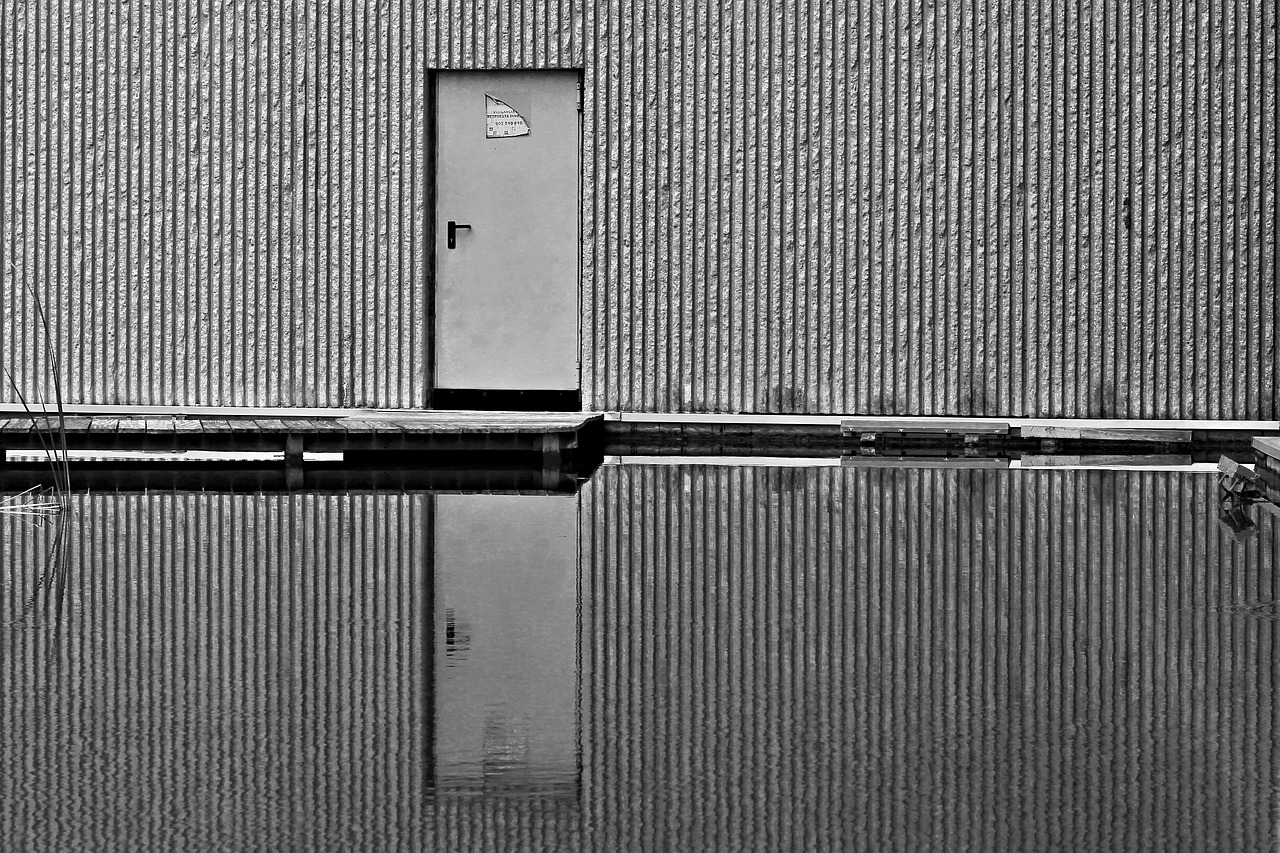
Geometric Shapes
Bauhaus often employed geometric shapes such as squares, rectangles, and circles in architectural design. These shapes continue to be prominent in minimalist architecture, adding a sense of order and simplicity.
Bauhaus, a design movement that emerged in the early 20th century, had a profound and lasting influence on architectural design. Its use of geometric shapes, including squares, rectangles, and circles, remains a hallmark of minimalist architecture today. Here’s an extended exploration of how these shapes continue to shape contemporary architectural aesthetics:
Timeless Aesthetics: The enduring appeal of geometric shapes lies in their timeless aesthetics. Squares, rectangles, and circles are fundamental and universally recognized forms that evoke a sense of balance, symmetry, and simplicity. They create a visual language that transcends cultural and temporal boundaries, making them a key element of minimalist architecture’s enduring popularity.
Harmony and Balance: Bauhaus principles emphasized harmony and balance in design. The use of geometric shapes allows architects to achieve these principles effortlessly. Squares and rectangles, for instance, provide a sense of stability and order, while circles introduce a dynamic and harmonious quality to architectural compositions.
Spatial Efficiency: Geometric shapes are inherently efficient in terms of space utilization. Squares and rectangles can be easily tessellated and aligned to maximize interior space, making them ideal for creating functional and practical living and working environments.
Clean Lines and Simplicity: Minimalist architecture celebrates clean lines and simplicity in design. Geometric shapes facilitate the creation of uncluttered, unadorned facades and interiors. The absence of unnecessary ornamentation emphasizes the purity of form and materials.
Natural Light and Views: Bauhaus-inspired architecture often incorporates large windows and open spaces. Geometric shapes, particularly rectangles, are conducive to the integration of expansive windows that invite abundant natural light and frame scenic views, connecting occupants with the environment.
Flexibility and Adaptability: The use of geometric shapes offers flexibility and adaptability in architectural design. Modular construction, a concept closely related to geometric forms, allows for easy expansion and modification of spaces to meet changing needs.
Sustainability: Minimalist architecture frequently prioritizes sustainability and energy efficiency. Geometric shapes can be used to optimize passive solar design, with carefully positioned windows and building orientations to maximize natural heating and cooling.
Innovation in Materials: Contemporary architecture often combines traditional materials with innovative ones. Geometric shapes can be employed to showcase the material’s unique properties, creating visually striking contrasts and emphasizing the materiality of the structure.
Architectural Iconography: Iconic buildings around the world often feature geometric shapes as integral elements of their designs. The Guggenheim Museum in New York, designed by Frank Lloyd Wright, is a prime example of how circular forms can create an architectural masterpiece that defines its identity.
Interplay of Light and Shadow: Geometric shapes interact with light and shadow in intriguing ways. The angles and edges of squares, rectangles, and circles can create captivating interplays of light and shadow throughout the day, enhancing the dynamic quality of architectural spaces.
In conclusion, the enduring legacy of Bauhaus in contemporary architecture is evident in the continued use of geometric shapes like squares, rectangles, and circles. These shapes provide architects with a versatile and timeless design language that allows them to create spaces that are aesthetically pleasing, functional, and in harmony with the principles of minimalist architecture. While the world of architecture evolves with new technologies and materials, the enduring appeal of these geometric forms ensures their place in the architectural landscape for generations to come.
For a comprehensive look at this subject, we invite you to read more on this dedicated page: The Bauhaus, 1919–1933 | Essay | The Metropolitan Museum of Art …

The Influence of Minimalism
Minimalism transcends its Bauhaus origins, permeating architectural design across the globe and across eras. Its influence can be observed in various aspects of contemporary architecture:
Minimalism, stemming from its Bauhaus roots, has evolved into a design philosophy that resonates worldwide and across different architectural epochs. Its enduring influence is palpable, leaving an indelible mark on various facets of contemporary architecture:
Clean Lines and Simplicity: One of the most prominent hallmarks of minimalism is its dedication to clean lines and simplicity. Contemporary buildings often embrace this aspect, showcasing uncluttered facades, streamlined shapes, and a sense of calm and order.
Open Spaces: Minimalism’s emphasis on openness and spaciousness has revolutionized interior design. Contemporary architects frequently incorporate open floor plans that eliminate unnecessary partitions, creating fluid living spaces that promote interaction and natural light.
Natural Materials: Minimalism’s love for natural materials like wood, stone, and glass continues to shape contemporary architecture. These materials not only enhance aesthetics but also offer sustainability benefits by reducing the environmental impact of construction.
Efficiency and Sustainability: Minimalism aligns well with the principles of efficiency and sustainability. Contemporary architects prioritize energy-efficient designs, incorporating features such as passive solar heating, rainwater harvesting, and green roofs to reduce a building’s ecological footprint.
Innovative Use of Light: Minimalism’s affinity for light as a design element remains at the forefront of contemporary architecture. Architects employ innovative techniques like floor-to-ceiling windows, skylights, and light wells to harness natural light and create visually stunning interior spaces.
Functional Aesthetics: The concept of “form follows function” from Bauhaus minimalism has a profound influence on contemporary architecture. Modern buildings prioritize the functionality of spaces while ensuring that aesthetics enhance, rather than hinder, their purpose.
Sustainability and Eco-Friendly Design: Minimalism’s principles align seamlessly with the growing demand for sustainable architecture. Contemporary architects frequently incorporate passive heating and cooling, efficient insulation, and renewable energy sources to create eco-friendly structures.
Minimalist Interiors: The minimalist aesthetic has also infiltrated interior design. Clean, uncluttered living spaces with a focus on essentials have become a defining characteristic of contemporary homes.
Integration of Nature: Minimalist architecture often seeks harmony with the surrounding environment. Contemporary architects frequently incorporate elements like courtyards, gardens, and natural landscaping to blur the boundaries between indoor and outdoor spaces.
Geometric Precision: The precision and geometric clarity of minimalism are evident in contemporary architectural designs. These designs often feature meticulous attention to detail, with an emphasis on proportion, balance, and symmetry.
Technology Integration: Minimalism doesn’t shy away from technological integration. Contemporary buildings often incorporate cutting-edge technologies for climate control, security, and communication, seamlessly blending innovation with minimalist aesthetics.
As minimalism continues to evolve and adapt to the needs and preferences of each era, its legacy in contemporary architecture remains a testament to its enduring appeal. Its timeless principles of simplicity, functionality, and beauty continue to shape the structures we live and work in, transcending geographical boundaries and architectural epochs.
To expand your knowledge on this subject, make sure to read on at this location: Minimalist Architecture: Beyond Aesthetics

Clean Lines and Simplicity
Minimalist architecture embraces clean lines and simplicity, favoring straightforward geometric forms. This aesthetic has become synonymous with modern and contemporary design, emphasizing the use of basic shapes to create visually striking structures.
Minimalist architecture is a design philosophy that transcends mere aesthetics; it is a powerful statement about the essence of space and form. At its core, minimalist architecture champions the idea that less is more, celebrating the elegance of simplicity and the impact of restraint.
This architectural approach finds beauty in the purity of clean lines and the absence of ornamentation. By favoring straightforward geometric forms, minimalist architecture creates spaces that are uncluttered, serene, and inherently functional. This approach extends beyond mere aesthetics; it becomes a way of thinking about design and the relationship between humans and their surroundings.
One of the remarkable aspects of minimalist architecture is its ability to convey a sense of timelessness. The reliance on basic shapes and neutral color palettes ensures that minimalist structures remain relevant and enduring across different eras. This timelessness is not only visually appealing but also environmentally sustainable, as it reduces the need for frequent renovations and updates.
Furthermore, minimalism isn’t just about empty spaces and stark surfaces; it’s about optimizing the use of available resources. By eliminating unnecessary embellishments, minimalist architecture often focuses on high-quality materials and efficient design. This not only reduces construction waste but also contributes to sustainability and energy efficiency.
In contemporary design, minimalism is more than a trend; it’s a mindset that prioritizes clarity, functionality, and purpose. Whether in residential, commercial, or public spaces, minimalist architecture continues to shape the way we experience the built environment. It creates spaces that evoke a sense of calm and contemplation, inviting us to appreciate the beauty of simplicity in a world often characterized by complexity.
Ultimately, minimalist architecture serves as a testament to the enduring power of less, reminding us that in the pursuit of design excellence, sometimes the most impactful statement is made by embracing the essentials and allowing space to breathe.
Explore this link for a more extensive examination of the topic: Minimalist Architecture: Beyond Aesthetics

Abundant Natural Light
Minimalist architecture often maximizes the use of natural light. Large windows, open floor plans, and strategically placed skylights are characteristic features that enhance the sense of openness and connection to the outdoors.
Expanding on the use of natural light in minimalist architecture:
Seamless Integration with Nature: Minimalist architecture prioritizes a harmonious relationship with the natural environment. The extensive use of windows and open spaces blurs the boundaries between the interior and exterior, creating a seamless integration with nature. This design philosophy allows occupants to feel connected to the changing seasons, weather patterns, and surrounding landscapes.
Daylight as a Design Element: Natural light is considered an integral design element in minimalist architecture. Architects carefully consider the orientation of a building and the placement of windows to harness daylight in a way that not only illuminates spaces but also shapes the overall aesthetic. The play of light and shadow becomes a design feature in itself.
Biophilic Benefits: Exposure to natural light has well-documented health and well-being benefits. Minimalist spaces flooded with daylight promote biophilic design principles, which emphasize the innate human connection to nature. Increased natural light can improve mood, productivity, and overall quality of life for occupants.
Energy Efficiency: While minimalist architecture embraces abundant natural light, it is also mindful of energy efficiency. Large windows are often strategically positioned to optimize passive solar heating and cooling. This reduces the reliance on artificial lighting and mechanical climate control systems, contributing to sustainability and energy conservation.
Visual Expansion: Natural light has a transformative effect on space perception. In minimalist interiors, it creates a sense of spaciousness and visual expansion. Even compact spaces can appear larger and more inviting when bathed in natural light. This effect aligns with the minimalist principle of simplicity and uncluttered living.
Time-Dependent Dynamics: The interplay of natural light throughout the day adds dynamic qualities to minimalist spaces. As the sun moves across the sky, light patterns change, casting different shadows and illuminating various aspects of the interior. This creates a living, breathing environment that evolves with the passage of time.
Material Selection: Minimalist architecture carefully selects materials and finishes that interact harmoniously with natural light. Light-colored surfaces and reflective materials are often chosen to maximize the diffusion of light throughout a space. This contributes to the sense of purity and tranquility associated with minimalist design.
Connection to Surroundings: Large windows and expansive glass walls in minimalist architecture provide unobstructed views of the surroundings. This connection to the external environment enhances the occupants’ sense of place and encourages mindfulness of the natural world.
Privacy and Control: While embracing natural light, minimalist architecture also offers mechanisms for privacy and light control. Options like blinds, shades, and smart glass can be integrated seamlessly into the design, allowing occupants to modulate the amount of incoming light as needed.
Artistic Expressiveness: Natural light becomes a canvas for artistic expression in minimalist architecture. The way light interacts with surfaces, objects, and architectural details can evoke emotions, create focal points, and add layers of meaning to the design.
In conclusion, the extensive use of natural light in minimalist architecture transcends its functional purpose and becomes an integral part of the design philosophy. It fosters a connection to nature, enhances well-being, and imbues minimalist spaces with a sense of tranquility, purity, and timelessness. The mastery of natural light is a hallmark of minimalist architects and continues to shape the aesthetics and experiences of contemporary living spaces.
For a comprehensive look at this subject, we invite you to read more on this dedicated page: 10 graphic design styles to help you craft your own

Emphasis on Functionality
The Bauhaus ethos of “form follows function” remains a guiding principle in minimalist architecture. Buildings are designed to serve their intended purposes efficiently and effectively, with every element having a clear purpose.
The Bauhaus ethos of “form follows function” has not only endured but continues to shape and influence contemporary minimalist architecture in profound ways. This principle, often attributed to the renowned architect Louis Sullivan, has transcended time to become a cornerstone of architectural design philosophy. In minimalist architecture, it takes on new significance, leading to the creation of spaces that are not just aesthetically pleasing but also highly functional and efficient.
Clarity of Purpose: At the heart of minimalist architecture lies a profound commitment to clarity of purpose. Every element, every line, and every material choice is carefully considered to ensure that it serves a distinct function. This commitment results in buildings that are not cluttered with unnecessary embellishments but rather are refined to their purest essence.
Efficiency and Simplicity: Minimalist architecture champions efficiency and simplicity. Spaces are designed to be as streamlined as possible, minimizing complexity and distractions. This approach not only makes spaces more visually appealing but also enhances their functionality. In minimalist homes, for example, open floor plans, ample natural light, and straightforward layouts promote ease of movement and a sense of tranquility.
Balanced Proportions: Proportions play a crucial role in minimalist architecture. Spaces are carefully balanced to create a sense of harmony and tranquility. Whether it’s the placement of windows to optimize natural light, the choice of materials to convey a sense of warmth, or the use of negative space to frame views, every decision is made with an acute awareness of proportion and balance.
Material Honesty: Minimalist architects have a deep respect for materials and their intrinsic qualities. Materials are selected for their functionality and durability, and their inherent beauty is often celebrated rather than concealed. Concrete, steel, glass, and wood are frequently used in their raw form, allowing their natural textures and characteristics to shine.
Spatial Flow: Another hallmark of minimalist architecture is the careful consideration of spatial flow. Spaces are interconnected in a way that promotes a seamless and intuitive movement within them. There’s an emphasis on creating spaces that facilitate ease of use, whether it’s a home, an office, or a public building.
Timelessness: Minimalist architecture aims for timelessness. By stripping away unnecessary ornamentation and embracing clean lines and simple forms, minimalist buildings are less likely to feel dated. They have the ability to adapt to changing needs and remain relevant for generations.
Sustainability: Minimalism and sustainability often go hand in hand. By focusing on efficient design, optimizing energy usage, and selecting eco-friendly materials, minimalist architecture can reduce its environmental impact while providing functional and aesthetically pleasing spaces.
In conclusion, the enduring influence of the Bauhaus ethos of “form follows function” in minimalist architecture transcends mere aesthetics. It underscores a fundamental philosophy that shapes how we conceive and create spaces. Minimalist architects continue to uphold this principle, forging a harmonious relationship between form and function that results in buildings and spaces that are both visually captivating and exceptionally purposeful. In a world where simplicity and efficiency are increasingly prized, minimalist architecture stands as a timeless testament to the power of design to enhance the human experience.
Looking for more insights? You’ll find them right here in our extended coverage: The Bauhaus, 1919–1933 | Essay | The Metropolitan Museum of Art …

Use of Industrial Materials
Minimalist architects frequently employ industrial materials such as concrete, steel, and glass. These materials are celebrated for their durability and sleek, contemporary appearance.
Minimalist architects are renowned for their ingenious use of industrial materials, including concrete, steel, and glass. These materials not only epitomize the essence of minimalism but also offer a myriad of advantages that extend beyond aesthetics.
Concrete, for instance, embodies the notion of understated elegance. Its clean lines and monochromatic hues align perfectly with the minimalist ethos. However, its true beauty lies in its durability. Concrete structures are known to withstand the test of time, weathering the elements with grace. This longevity not only minimizes the need for frequent maintenance but also reduces the environmental footprint of a building over its lifespan.
Steel, with its strength and flexibility, empowers minimalist architects to craft soaring, open spaces with ease. Its ability to span vast distances without the need for excessive supporting columns allows for uncluttered, expansive interiors. Moreover, steel’s resilience makes it an ideal choice for structures that must endure the forces of nature, whether it’s the wind in a skyscraper or the snow load on a modern home.
Glass, perhaps the most iconic minimalist material, introduces a sense of transparency and connection with the environment. It blurs the boundaries between indoor and outdoor spaces, allowing natural light to flood the interiors. Glass not only contributes to energy efficiency by harnessing daylight but also reduces the need for artificial lighting, further aligning with sustainable design principles.
Beyond their practical benefits, these industrial materials symbolize a commitment to simplicity and functionality. They reflect a philosophy that values what is essential and timeless in design, while also embracing the principles of sustainability. Minimalist architects continue to push the boundaries of creativity with these materials, demonstrating that even in their stark simplicity, there is room for innovation, elegance, and a harmonious coexistence with the environment.
To delve further into this matter, we encourage you to check out the additional resources provided here: Minimalism Movement Overview | TheArtStory
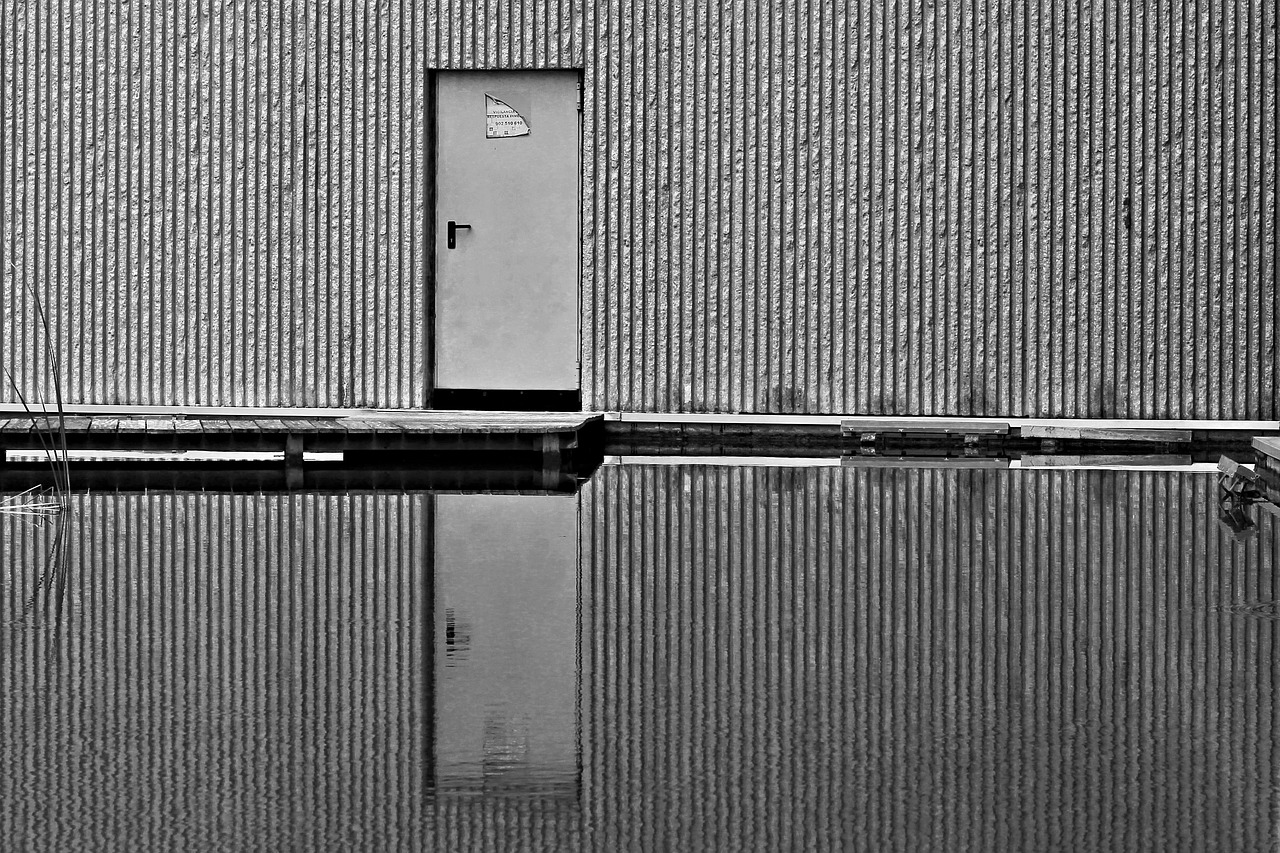
Sustainability and Eco-Friendly Design
Minimalist architecture often aligns with sustainable and eco-friendly design practices. The emphasis on simplicity and efficiency extends to energy-efficient systems, green building materials, and a reduced ecological footprint.
Minimalist architecture is more than just an aesthetic choice; it embodies a philosophy that harmonizes seamlessly with sustainable and eco-friendly design principles. This synergy goes beyond mere aesthetics and dives deep into the very core of construction and building practices. Here’s how minimalist architecture is intrinsically tied to sustainability and eco-friendliness:
Efficiency in Space Utilization: Minimalism places a premium on efficient use of space. This means smaller, well-utilized spaces that require fewer resources for heating, cooling, and maintenance. By optimizing spatial layouts, minimalist designs inherently reduce the overall energy consumption of a building.
Natural Light and Ventilation: Minimalist architecture often prioritizes an abundance of natural light and ventilation. Large, strategically placed windows and open floor plans not only create an airy and inviting atmosphere but also reduce the need for artificial lighting and air conditioning during the day.
Energy-Efficient Systems: Minimalist structures frequently incorporate energy-efficient heating, cooling, and lighting systems. These systems are designed to minimize energy waste, ensuring that the building operates efficiently and with a reduced carbon footprint.
Green Building Materials: Minimalist designs often favor the use of eco-friendly and sustainable building materials. Recycled, reclaimed, or locally sourced materials are preferred, reducing the environmental impact associated with the production and transportation of construction materials.
Streamlined Construction: The simplicity and clean lines of minimalist architecture can streamline the construction process. This not only reduces construction waste but also minimizes the energy and resources required for building assembly.
Longevity and Durability: Minimalist designs often prioritize durable materials and construction methods. This results in structures that are built to last, reducing the need for frequent renovations or replacements—a sustainable approach that conserves resources over time.
Emphasis on Functionality: Minimalist architecture places a strong emphasis on functionality and practicality. Spaces are designed with a clear purpose, reducing the tendency for excess and waste. This approach promotes a conscious and efficient use of resources.
Low Maintenance: The minimalist aesthetic often involves clean lines and surfaces that are easy to maintain. Reduced ornamentation means fewer nooks and crannies that collect dust and dirt, leading to lower cleaning and maintenance requirements.
Integration with Nature: Many minimalist designs seamlessly integrate with the natural environment. Whether through features like green roofs, rainwater harvesting, or passive solar design, these elements not only enhance sustainability but also foster a deeper connection to the surrounding landscape.
Lifestyle Choices: Minimalist architecture often aligns with minimalist lifestyles, which tend to emphasize experiences over possessions. This shift in perspective can lead to reduced consumption and a lighter ecological footprint overall.
In conclusion, minimalist architecture embodies a holistic approach to sustainability and eco-friendliness. It transcends aesthetics to encompass efficient space utilization, responsible material choices, and a commitment to reducing environmental impact. By embracing minimalist principles, architects and designers not only create visually striking structures but also contribute to a more sustainable and environmentally conscious future for the built environment.
For a comprehensive look at this subject, we invite you to read more on this dedicated page: What Is Minimalist Design?

Minimalist Interior Design
Minimalism also extends to interior spaces, emphasizing clutter-free environments, neutral color palettes, and a focus on essential furnishings. This approach creates serene, uncluttered living spaces that promote a sense of calm and well-being.
The concept of minimalism has gained significant traction in recent years, not only as an interior design philosophy but as a lifestyle choice. It transcends the mere aesthetics of decor and becomes a way of fostering a simpler, more intentional life. Expanding on the idea of minimalism within interior spaces and its benefits:
Enhanced Functionality: A minimalist approach to interior design prioritizes functionality. Furnishings are carefully selected to serve a purpose, eliminating unnecessary items that might clutter the space. This results in rooms that are highly efficient and well-suited to their intended use.
Stress Reduction: Clutter-free environments have a profound impact on mental well-being. A minimalist living space minimizes visual noise and distractions, allowing for a calmer and less stressful atmosphere. It becomes a sanctuary where one can unwind and find respite from the chaos of modern life.
Improved Focus: With fewer distractions, it becomes easier to focus on the task at hand, whether it’s work, study, or relaxation. Minimalist interiors promote a sense of mindfulness, enabling individuals to fully engage in their activities without feeling overwhelmed by their surroundings.
Sustainability: Minimalism aligns with sustainability principles. By purchasing fewer, higher-quality items, individuals reduce their environmental footprint. They also avoid the cycle of excessive consumption and disposal, contributing to a more eco-friendly lifestyle.
Time Savings: Maintaining a minimalist living space requires less time and effort. There are fewer items to clean, organize, and repair. This frees up time for more meaningful activities and experiences.
Flexibility and Adaptability: Minimalist interiors are highly adaptable. They can accommodate changing needs and circumstances without requiring a complete overhaul. This flexibility is particularly valuable in urban living, where space is often limited and dynamic.
Personal Expression: While minimalism emphasizes simplicity, it doesn’t mean sacrificing personal style. Minimalist interiors can still reflect individual tastes and preferences. The focus is on curated, meaningful decor that tells a story and resonates with the homeowner.
Longevity: Minimalist furnishings and decor tend to be timeless and durable. Investing in quality pieces means they are likely to last longer, reducing the need for frequent replacements and contributing to cost savings in the long run.
Positive Social Impact: Minimalism often involves decluttering and simplifying possessions. Items that are no longer needed can be donated or repurposed, benefiting others and reducing waste.
Healthy Living: A minimalist approach to interior design encourages a cleaner, healthier living environment. With fewer items to collect dust and allergens, indoor air quality can improve, benefiting respiratory health.
In summary, minimalism extends beyond interior design aesthetics; it’s a lifestyle choice that promotes simplicity, mindfulness, and intentional living. By adopting a minimalist approach within interior spaces, individuals can create environments that enhance functionality, reduce stress, and contribute to a sense of well-being. This holistic approach to minimalism can lead to a more sustainable, meaningful, and fulfilling life.
Additionally, you can find further information on this topic by visiting this page: What Is Minimalist Design?

Iconic Examples of Minimalist Architecture
Several iconic architectural works epitomize the minimalist aesthetic, showcasing the enduring influence of Bauhaus principles:
Numerous iconic architectural works stand as testaments to the enduring influence of Bauhaus principles, which have left an indelible mark on the world of design and architecture. Let’s explore some of these remarkable architectural achievements that epitomize the minimalist aesthetic:
Bauhaus Building, Dessau, Germany: This is the literal birthplace of the Bauhaus movement. Designed by Walter Gropius, the founder of Bauhaus, the building itself is a masterpiece of minimalist design. Its functional, cubic structure and emphasis on clean lines and geometric forms reflect the core tenets of the Bauhaus school.
Farnsworth House, Illinois, USA: Designed by renowned architect Ludwig Mies van der Rohe, the Farnsworth House is a quintessential example of modernist architecture. Its use of steel and glass to create an open, minimalist living space blurs the boundaries between the interior and exterior, embodying the idea of “less is more.”
Villa Savoye, Poissy, France: Designed by Le Corbusier, one of the most influential figures in modern architecture, Villa Savoye is a masterpiece of functionalist design. It features a clean, white facade, an open floor plan, and a raised structure that allows for maximum flexibility and interaction with the natural surroundings.
Barcelona Pavilion, Spain: Mies van der Rohe’s Barcelona Pavilion is a celebrated architectural marvel. Its use of materials such as marble, glass, and steel, combined with an open-plan layout and minimalist furnishings, creates an atmosphere of elegance and simplicity.
Seagram Building, New York, USA: Designed by Mies van der Rohe and Philip Johnson, the Seagram Building is a towering symbol of the International Style. Its bronze and glass curtain wall and sleek, minimalist design set new standards for skyscraper architecture.
Villa Tugendhat, Czech Republic: Designed by Mies van der Rohe, this villa is a prime example of the Bauhaus movement’s influence beyond Germany. Its use of materials like onyx, glass, and steel, along with an open-plan layout, defines the modernist aesthetic.
Case Study Houses, California, USA: A series of experimental homes designed by various architects in the mid-20th century, the Case Study Houses embraced minimalist principles. These homes explored innovative materials and open design concepts, reflecting the post-war era’s desire for simplicity and functionality.
The Glass House, Connecticut, USA: Designed by Philip Johnson, this transparent structure blurs the line between architecture and nature. Its minimalist design, featuring glass walls and an open interior, offers a profound connection to the surrounding landscape.
National Congress of Brazil, Brasília: Designed by Oscar Niemeyer, this architectural masterpiece represents the fusion of minimalist design with organic forms. The stark white buildings, characterized by curves and clean lines, contribute to the unique modernist landscape of Brasília.
Jewish Museum Berlin, Germany: Designed by architect Daniel Libeskind, this museum’s extension is a stunning example of contemporary minimalist architecture. Its jagged, zinc-clad form and use of voids and empty spaces create a powerful and emotional experience for visitors.
These architectural marvels serve as enduring tributes to the minimalist aesthetic and the enduring legacy of Bauhaus principles. They continue to inspire architects, designers, and enthusiasts worldwide, demonstrating that the power of simplicity and functional design transcends time and place.
Don’t stop here; you can continue your exploration by following this link for more details: Bauhaus Architecture Style | The German Architecture Of Bauhaus
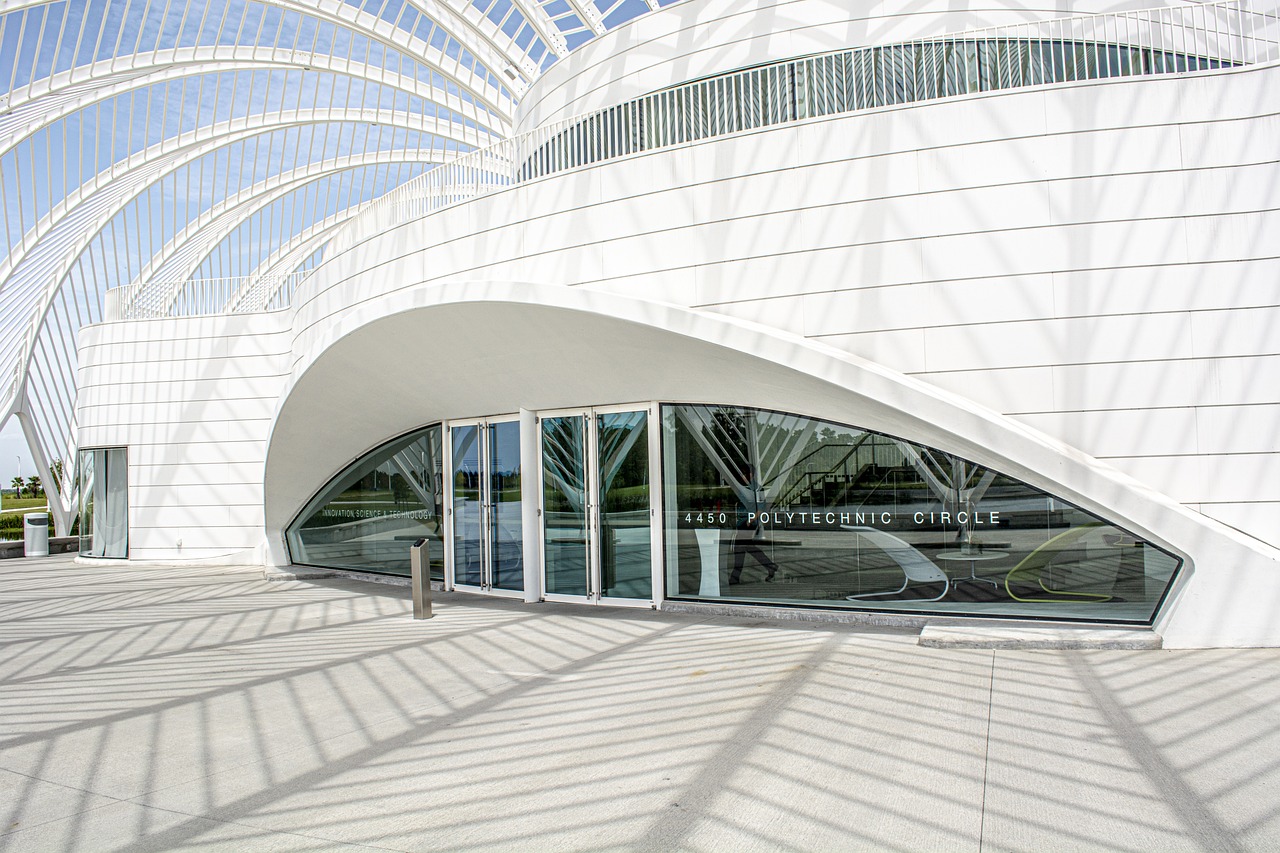
Farnsworth House (Mies van der Rohe)
Designed by Ludwig Mies van der Rohe in 1951, the Farnsworth House is a quintessential example of minimalist architecture. Its glass walls and open floor plan blur the boundaries between indoor and outdoor spaces, embracing simplicity and transparency.
Designed by Ludwig Mies van der Rohe in 1951, the Farnsworth House stands as a quintessential example of minimalist architecture, transcending the confines of time and style. This architectural masterpiece redefines our perception of living space by seamlessly blending the indoors with the outdoors.
Mies van der Rohe’s vision was to create a structure that celebrated simplicity, elegance, and transparency. The Farnsworth House achieves this with its iconic glass walls, which dissolve the barriers between the interior and the surrounding natural landscape. As you step inside, you’re greeted with uninterrupted views of the sprawling meadows or the serene river, depending on the season.
Beyond its aesthetic allure, this architectural gem offers a profound connection to nature. The changing seasons bring a kaleidoscope of colors and moods, transforming the living experience within. From the lush greenery of spring to the crisp solitude of winter, each season becomes a part of the dwelling’s narrative.
The open floor plan of the Farnsworth House creates a sense of fluidity and freedom. The absence of walls allows light to dance freely throughout the space, creating ever-evolving patterns and shadows. It’s a testament to the power of design to evoke emotions and sensations, making residents and visitors feel like they’re part of the landscape.
This architectural marvel has not only inspired generations of architects but has also sparked a broader conversation about the relationship between humans and their environment. It challenges us to reconsider our notions of shelter, to appreciate the beauty of simplicity, and to recognize the harmonious coexistence between human-made structures and the natural world.
In essence, the Farnsworth House is more than just a structure; it’s a philosophical statement about the potential for architecture to blend seamlessly with its surroundings while maintaining the purity of design principles. It invites us to ponder the boundaries of our own living spaces and the possibility of living in harmony with the world outside.
To expand your knowledge on this subject, make sure to read on at this location: Bauhaus Architecture Style | The German Architecture Of Bauhaus

The Glass House (Philip Johnson)
Philip Johnson’s Glass House, completed in 1949, is another iconic minimalist masterpiece. A transparent box, it exemplifies the use of materials like glass and steel to create a minimalist living environment.
Philip Johnson’s Glass House, a triumph of minimalist architecture completed in 1949, stands as a timeless masterpiece that continues to inspire designers and architects alike. This transparent box represents a pinnacle of architectural innovation, showcasing the ingenious use of materials like glass and steel to craft an epitome of minimalist living environments.
One of the most striking features of the Glass House is its seamless integration with the surrounding landscape. The structure dissolves the boundary between indoors and outdoors, inviting the natural world to become an integral part of the living experience. The extensive use of glass, in particular, accomplishes this feat, allowing unobstructed views of the lush Connecticut countryside. As a result, residents and visitors are treated to ever-changing panoramas of the seasons, enhancing the sense of connection with the environment.
The minimalist design of the Glass House is characterized by clean lines, simplicity, and an absence of ornamentation. Its unadorned, transparent walls create an ethereal quality, as if the structure barely exists. This intentional reduction of architectural elements to their essence underscores the beauty of minimalism, where less truly becomes more.
Furthermore, the use of steel in the construction of the Glass House not only imparts a sense of industrial chic but also enables the open and airy design. The structural integrity of the steel framework allows for large expanses of glass, ensuring that the living spaces are flooded with natural light. The interplay of steel and glass serves as a testament to the harmonious coexistence of functionality and aesthetics in minimalist design.
Inside the Glass House, the minimalist ethos extends to the interior furnishings and decor. The carefully curated selection of furniture and art pieces adheres to the principle that each element should serve a purpose and contribute to the overall composition. This approach fosters a sense of serenity and tranquility, allowing the mind to focus on the essentials of living.
Philip Johnson’s Glass House transcends the constraints of time and trends, remaining a beacon of minimalist architectural brilliance. Its legacy lies not only in its physical form but also in its enduring influence on the design world. Architects and enthusiasts continue to draw inspiration from its melding of transparency, simplicity, and the artful use of materials. The Glass House is a testament to the power of minimalism to create spaces that are simultaneously functional and breathtakingly beautiful, showcasing the ageless allure of this design philosophy.
Looking for more insights? You’ll find them right here in our extended coverage: International Style – Overview | TheArtStory

The Barcelona Pavilion (Mies van der Rohe)
Mies van der Rohe’s Barcelona Pavilion, designed for the 1929 International Exposition in Barcelona, is a seminal work of minimalist architecture. It features sleek lines, open spaces, and a masterful use of materials.
Mies van der Rohe’s Barcelona Pavilion, designed for the 1929 International Exposition in Barcelona, stands as an iconic masterpiece that embodies the essence of minimalist architecture. This architectural gem, also known as the German Pavilion, continues to inspire architects, designers, and enthusiasts alike for several compelling reasons:
Timeless Elegance: The Barcelona Pavilion exudes a timeless elegance that transcends the era of its creation. Its design principles, rooted in minimalism, prioritize clean lines and unadorned surfaces, resulting in a structure that feels contemporary even by today’s standards.
Spatial Mastery: Mies van der Rohe’s genius lies in his ability to manipulate space. The Pavilion’s open plan blurs the boundaries between interior and exterior, creating a seamless flow that encourages contemplation and engagement with the surrounding landscape. It’s a testament to how minimalism can redefine spatial experiences.
Material Brilliance: The Pavilion is a showcase of material brilliance. Mies selected materials with utmost care and precision, using sumptuous marbles, onyx, glass, and travertine. These materials were employed in their purest forms, allowing their innate textures and colors to shine, highlighting the inherent beauty of materials.
Refined Detailing: Minimalism is often associated with meticulous attention to detail, and the Barcelona Pavilion exemplifies this aspect. Every element, from the elegant Barcelona Chairs to the graceful curved walls, showcases the meticulous craftsmanship and dedication to perfection that are hallmarks of minimalism.
Spatial Flexibility: The Pavilion’s layout is remarkably flexible. Its design allows for various spatial configurations, making it adaptable for different functions over the years. This adaptability underscores the functionality aspect of minimalism, as spaces can be repurposed to suit changing needs.
Iconic Influence: The Barcelona Pavilion’s influence reverberates throughout the world of architecture and design. Its iconic status has inspired countless architects to explore minimalist principles, and its legacy can be seen in contemporary architectural marvels that prioritize simplicity and functionality.
Cultural Significance: Beyond its architectural significance, the Pavilion carries cultural weight. It has become a symbol of modernist design and a representation of the principles that guide minimalist architecture: the elimination of the unnecessary, a focus on essential elements, and an emphasis on creating spaces that engage and elevate the human spirit.
Ongoing Preservation: The commitment to preserving the Barcelona Pavilion highlights its enduring relevance. It serves as a living testament to the timelessness of minimalist design and the importance of maintaining architectural treasures that continue to inspire future generations.
In essence, Mies van der Rohe’s Barcelona Pavilion is a testament to the power of minimalist architecture to transcend time and captivate the imagination. Its enduring appeal lies in its ability to distill architectural elements to their purest forms while creating spaces that resonate with a sense of tranquility, beauty, and purpose. As an architectural icon, it reminds us that minimalism is not a fleeting trend but a profound design philosophy that continues to shape the way we experience and appreciate the built environment.
To expand your knowledge on this subject, make sure to read on at this location: Bauhaus Movement Overview | TheArtStory
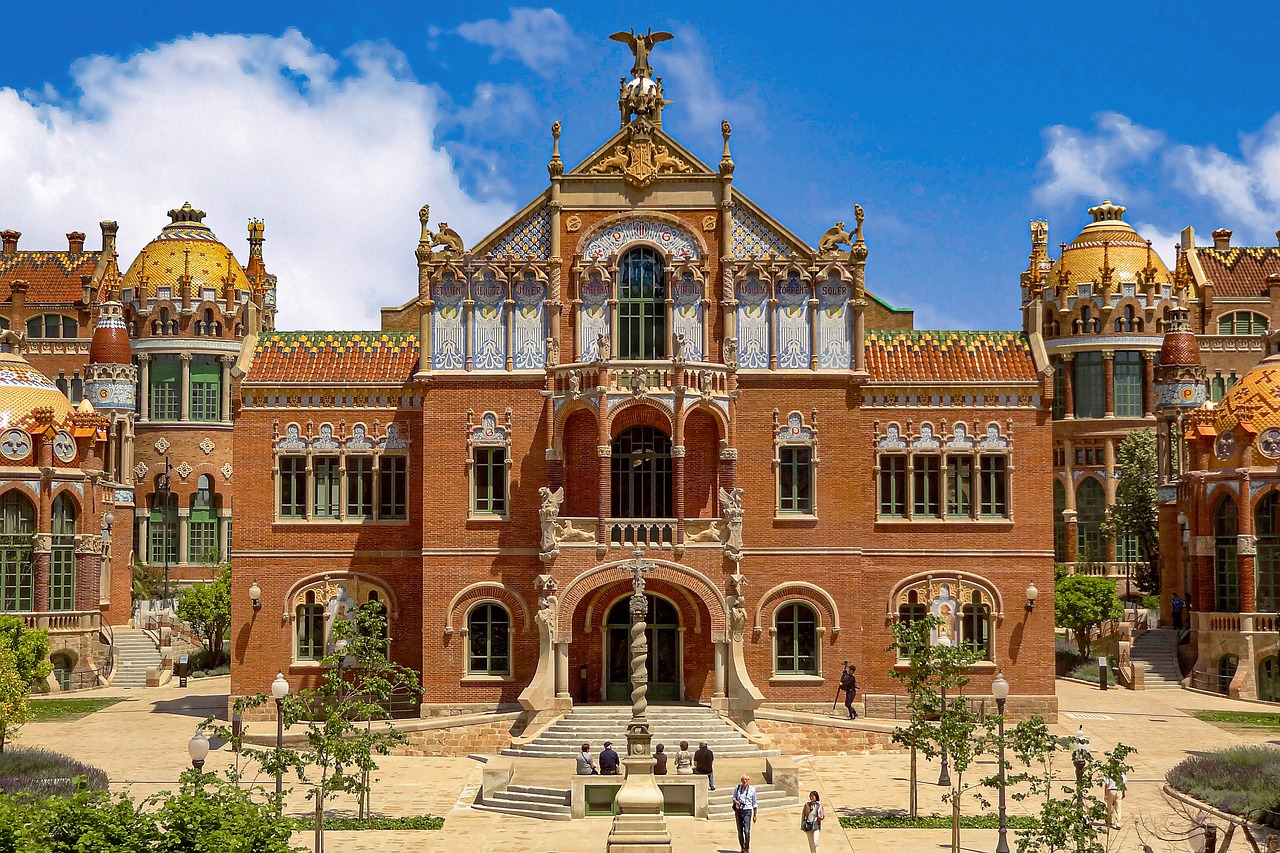
The Timeless Allure of Minimalism
Minimalism in architecture endures because it captures a timeless sense of elegance, simplicity, and functionality. It reflects the desire for spaces that facilitate both aesthetic appreciation and practical living. As we continue to navigate an ever-evolving world, the principles of Bauhaus and minimalism remind us that sometimes, less truly is more, and that in simplicity, we often find beauty, functionality, and enduring relevance in the built environment.
Minimalism in architecture endures because it captures a timeless sense of elegance, simplicity, and functionality. It reflects the desire for spaces that facilitate both aesthetic appreciation and practical living. As we continue to navigate an ever-evolving world, the principles of Bauhaus and minimalism remind us that sometimes, less truly is more, and that in simplicity, we often find beauty, functionality, and enduring relevance in the built environment.
At its core, minimalism conveys a sense of calm and order in an increasingly chaotic and cluttered world. It’s a design philosophy that seeks to eliminate distractions, allowing us to focus on what truly matters. In our homes, minimalist interiors create serene sanctuaries where we can escape the noise of modern life and find solace in elegant simplicity.
Moreover, minimalism is versatile and adaptable. Its clean lines and neutral palettes offer a timeless canvas that can be personalized with individual touches and elements. Whether it’s through art, furniture, or personal artifacts, minimalistic spaces can easily reflect the unique character and preferences of their inhabitants.
Minimalist architecture’s enduring relevance is also tied to its eco-consciousness. Sustainability has become an integral part of contemporary design, and minimalism naturally aligns with this ethos. By eliminating unnecessary elements and emphasizing functionality, minimalist structures inherently promote energy efficiency and responsible resource use.
In today’s fast-paced world, the enduring appeal of minimalism serves as a counterbalance to the constant noise and visual clutter we encounter daily. It offers a respite—a return to simplicity, clarity, and purpose. It reminds us that our built environments can be more than just structures; they can be expressions of our values and aspirations.
As architects and designers continue to explore new horizons and push boundaries, minimalism remains a guiding philosophy that grounds us in essential principles. It inspires us to seek balance in our designs, to create spaces that inspire, uplift, and support our well-being. In an era of rapid change and complexity, minimalism remains a steadfast reminder that beauty and functionality can be found in the elegance of simplicity.
For additional details, consider exploring the related content available here Bauhaus Legacy: From Walter Gropius to Weiler Art in Tel-Aviv

More links
If you’d like to dive deeper into this subject, there’s more to discover on this page: Bauhaus Architecture Style | The German Architecture Of Bauhaus
